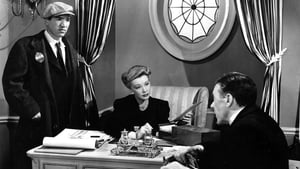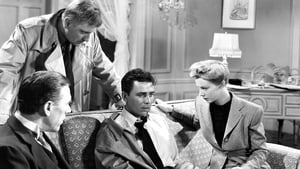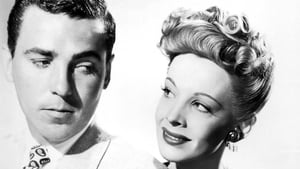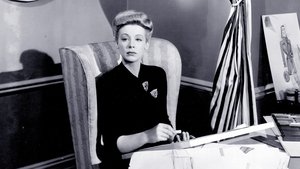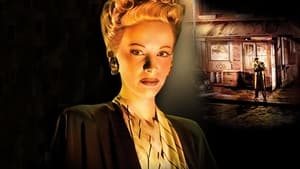Contact: [email protected]
Video Sources 0 Views
- The House on 92nd Street


The House on 92nd Street 1945 First Early Colored Films Version
Synopsis
Table of Contents
ToggleReview: The House on 92nd Street (1945) – A Riveting Espionage Thriller

Introduction
The House on 92nd Street, released in 1945, is a gripping espionage thriller directed by Henry Hathaway. Renowned for its documentary-style approach and authentic portrayal of counterintelligence operations during World War II, this classic film continues to captivate audiences with its tense atmosphere and riveting storyline. In this review, we’ll delve into the compelling world of The House on 92nd Street and its enduring impact on the spy thriller genre.
Check The Full Colorized Movies List
Check Our Colorized Movies Trailer Channel
Understanding The House on 92nd Street (1945): Director, Cast, and Genre
Directed by Henry Hathaway, The House on 92nd Street features a talented ensemble cast, including William Eythe, Lloyd Nolan, and Signe Hasso. The film belongs to the espionage thriller genre, known for its suspenseful plot twists, high-stakes intrigue, and shadowy characters.
Exploring the World of The House on 92nd Street (1945): Plot and Characters
The House on 92nd Street follows the story of Bill Dietrich, an FBI agent tasked with infiltrating a Nazi spy ring operating in New York City. As Bill delves deeper into the clandestine world of espionage, he must navigate a web of deception and betrayal while staying one step ahead of his enemies. With the fate of the nation hanging in the balance, Bill races against time to uncover the truth and bring the spies to justice.
The Art of Film Colorization
While The House on 92nd Street was originally filmed in black and white, its early colorized version adds a new layer of depth to its atmospheric visuals. The colorization process enhances the film’s documentary-style realism and captures the tension of its espionage plot with striking clarity.
Early Colored Films: A Brief History
The history of early colored films is marked by innovation and experimentation as filmmakers sought to enhance the visual appeal of their movies. From hand-tinted frames to pioneering technicolor processes, the evolution of colorization techniques transformed the cinematic landscape, offering audiences a new way to experience the thrills and suspense of espionage thrillers.
The House on 92nd Street (1945) and Its Early Colored Version
The decision to release The House on 92nd Street in a colorized format was made with the intention of immersing audiences in the gritty realism of its espionage plot and enhancing the film’s visual impact. While some purists may prefer the original black and white version, the early colorized edition of The House on 92nd Street adds a new layer of depth to its documentary-style cinematography and captures the intensity of its espionage plot with breathtaking clarity.
The Debate Over Film Colorization
The debate over film colorization continues to divide audiences and industry professionals alike. While some argue that colorization breathes new life into classic films and makes them more accessible to modern audiences, others maintain that it compromises the artistic integrity of the original work. As technology advances and filmmaking techniques evolve, the debate over colorization remains a topic of ongoing discussion within the film community.
Examining The House on 92nd Street (1945) as an Early Colored Film
Viewing The House on 92nd Street in its early colorized iteration offers audiences a fresh perspective on its documentary-style realism and high-stakes intrigue. The colorization process enhances the film’s atmospheric cinematography and captures the tension of its espionage plot with stunning clarity. As viewers are drawn into the shadowy world of Nazi spies and undercover agents, they are treated to a visual feast that immerses them in the heart-pounding thrills of espionage.
Influence and Legacy: The House on 92nd Street (1945)’s Impact on Cinema
The House on 92nd Street is widely regarded as a groundbreaking film that revolutionized the spy thriller genre. Its documentary-style approach and authentic portrayal of counterintelligence operations set a new standard for realism in espionage cinema, inspiring countless filmmakers to explore similar themes in their own work. The film’s enduring popularity has cemented its status as a timeless classic that continues to captivate audiences with its gripping storyline and tense atmosphere.
Director’s Cinematic Legacy: Beyond The House on 92nd Street (1945)
Henry Hathaway’s directorial legacy extends far beyond The House on 92nd Street, encompassing a diverse body of work that includes acclaimed films such as The Naked City and Kiss of Death. As one of the most respected filmmakers of his generation, Hathaway was known for his ability to craft compelling narratives that combined thrilling action with thought-provoking drama. The House on 92nd Street stands as a testament to his talent and creativity, solidifying his reputation as one of the great auteurs of classic Hollywood cinema.
Themes Explored in The House on 92nd Street (1945)
At its core, The House on 92nd Street explores themes of patriotism, loyalty, and sacrifice in the context of World War II espionage. Through its authentic portrayal of counterintelligence operations and morally complex characters, the film offers a nuanced examination of the human cost of war and the courage required to confront tyranny and oppression.
Reception and Controversy Surrounding The House on 92nd Street (1945)
Upon its release, The House on 92nd Street received widespread critical acclaim for its documentary-style realism, gripping storyline, and powerhouse performances. While the decision to release the film in a colorized format sparked debate among purists, its enduring popularity has cemented its status as a timeless classic of the espionage thriller genre.
Where to Watch The House on 92nd Street (1945) Online
For those eager to experience The House on 92nd Street for themselves, the film is readily available on popular streaming platforms such as Amazon Prime Video, Google Play Movies, and iTunes. Whether viewed in its original black and white format or its early colorized iteration, The House on 92nd Street offers a cinematic experience that is both thrilling and visually stunning.
FAQs About The House on 92nd Street (1945)
1. Is The House on 92nd Street based on a true story?
No, The House on 92nd Street is a fictional film that draws inspiration from real-life counterintelligence operations during World War II. While the film’s storyline may be fictionalized, its documentary-style approach and authentic portrayal of espionage activities lend it a sense of realism and authenticity.
2. Who starred in The House on 92nd Street?
The House on 92nd Street features a talented ensemble cast, including William Eythe as Bill Dietrich, Lloyd Nolan as FBI agent George A. Briggs, and Signe Hasso as Elsa Gebhardt, a German spy. The film also features a number of real-life FBI agents and personnel in supporting roles, adding to its sense of authenticity.
3. What is the central message of The House on 92nd Street?
At its core, The House on 92nd Street explores themes of patriotism, loyalty, and sacrifice in the context of World War II espionage. Through its authentic portrayal of counterintelligence operations and morally complex characters, the film offers a nuanced examination of the human cost of war and the courage required to confront tyranny and oppression.
4. Why was The House on 92nd Street released in a colorized format?
The decision to release The House on 92nd Street in a colorized format was made with the intention of immersing audiences in the gritty realism of its espionage plot and enhancing the film’s visual impact. While some purists may prefer the original black and white version, the early colorized edition of The House on 92nd Street adds a new layer of depth to its documentary-style cinematography and captures the intensity of its espionage plot with breathtaking clarity.
5. What is the legacy of The House on 92nd Street?
The House on 92nd Street is widely regarded as a groundbreaking film that revolutionized the spy thriller genre. Its documentary-style approach and authentic portrayal of counterintelligence operations set a new standard for realism in espionage cinema, inspiring countless filmmakers to explore similar themes in their own work. The film’s enduring popularity has cemented its status as a timeless classic that continues to captivate audiences with its gripping storyline and tense atmosphere.
6. Are there any sequels or remakes of The House on 92nd Street?
No, there have been no official sequels or remakes of The House on 92nd Street. However, the film’s enduring popularity has inspired countless reinterpretations and homages in various media. Nonetheless, none have captured the gritty realism and tense atmosphere of the original 1945 classic.
7. Where can I watch The House on 92nd Street online?
For those eager to experience The House on 92nd Street for themselves, the film is readily available on popular streaming platforms such as Amazon Prime Video, Google Play Movies, and iTunes. Whether viewed in its original black and white format or its early colorized iteration, The House on 92nd Street offers a cinematic experience that is both thrilling and visually stunning.
Conclusion
In conclusion, The House on 92nd Street (1945) stands as a groundbreaking film that revolutionized the spy thriller genre with its documentary-style approach and authentic portrayal of counterintelligence operations during World War II. Whether viewed in its original black and white format or its early colorized iteration, Henry Hathaway’s insightful direction and the stellar performances of the cast offer a cinematic experience that is both thrilling and visually stunning. As viewers are drawn into the shadowy world of espionage and intrigue, they are treated to a visceral journey that challenges their beliefs about patriotism, loyalty, and sacrifice. The House on 92nd Street remains a timeless classic that continues to enthrall and inspire audiences around the world.
